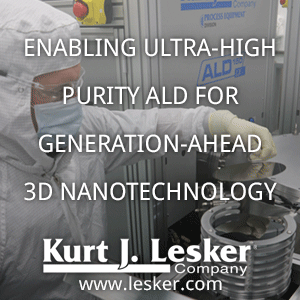Finnish metrology specialist Chipmetrics has expanded its portfolio with a new range of advanced test chips and wafer solutions aimed at accelerating prototyping and enhancing precision in next-generation semiconductor process development. The new releases include the ASD-1b area-selective deposition chip, a High Surface Area wafer, and pre-coated High Aspect Ratio test structures such as PillarHall and VHAR1. These tools are designed to simulate real-world manufacturing conditions with greater accuracy, helping engineers optimise processes more efficiently and reduce development cycles in ALD and other thin-film applications.
The ASD-1b chip provides a tricolour material layout with metal, SiO₂ and Si₃N₄ surfaces, enabling detailed assessment of selectivity and defectivity across multiple deposition techniques. Meanwhile, the new HSA wafer delivers up to 300 times greater surface area sensitivity through deep trench designs, supporting ultra-sensitive material studies. By offering pre-coated HAR structures, Chipmetrics addresses the growing industry demand for realistic conformality and uniformity testing. According to CEO Mikko Utriainen, these solutions are set to streamline benchmarking of new chemistries and processes, giving development teams faster, clearer feedback to advance semiconductor innovation.
Chipmetrics’ new metrology tools for advanced thin film process development. Left: Pre-coated high aspect ratio test structures, including PillarHall® (lateral AR > 1000) and VHAR1 (vertical AR = 200), for evaluating conformality and film penetration. Centre: The ASD-1b area selective deposition test chip with tricolour material layout for testing selectivity across Cu, SiO₂ and Si₃N₄ surfaces. Right: High Surface Area (HSA) wafer combining a 150 mm VHAR1 wafer within a 300 mm pocket wafer, providing up to 300× enhanced surface area for sensitive material studies.
Source:
Chipmetrics Expands Product Line with Advanced ALD Test Chips and Wafer Solutions - Chipmetrics



%20(1).png)

